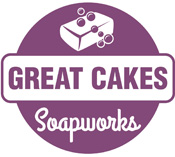Preparations for Making Lotion
Maybe it seems like I’m drawing this out more than necessary, but I just feel it’s important to recognize the safety issues involved with making lotion. Especially since the small, handmade toiletries industry is pretty much unregulated. Yesterday, I talked about the necessity of having your lotion preserved to prevent the nasties from growing. Today is more about preventing the nasties from starting out in your formula by using what’s called “Good Manufacturing Practice“.
The main rule is: keep everything clean and sterile. That includes work surfaces, utensils, mixing containers, and even the ingredients. Before you intend to make lotion, you must have a clean, sterile work environment. This can be achieved in a number of ways. For me, since I work in my kitchen, I have to be sure that there is no food near my work area, and all of my countertops have been sterilized. I also sterilize my utensils and bowls. It is important to use glass or stainless steel, since plastics have been known to harbor bacteria. Your stick blender (or hand blender) should get extra special treatment. One of my formulating friends says she takes care of hers by “turning it on high and blending the dickens out of really hot soapy water with a splash of bleach in it. That helps get the little divit of an arm clean up inside.”
My preferred sterilizer is a spray bottle of rubbing alchohol and clean paper toweling. Other formulators use bleach water (1 part bleach, 5 parts water). You can also use Lysol spray or disinfecting wipes.
Your ingredients need to be kept as clean as possible too. First and foremost, they should be stored in airtight containers in a cool, (and dark) enviroment if possible. Avoid cross-contamination with other ingredients or “filth” as the FDA calls it. Lotion recipes also call for the ingredients to be heated to kill any bacteria that may have already accumulated. I have sent my lotion to Dr. Cindy Jones of Sagescript Institute who performs challenge tests in her lab for bacteria as well as yeast and fungi. She gives this advice for reducing the bacteria in your ingredients:
I do recommend bringing both water and oil phases to 150-170 degrees for 15 minutes. I can tell you I have had a few clients who have had bacterial growth show up in my tests and after I told them to do this, the bacterial growth cleared up.
I take Dr. Jones seriously when she says:
“If bacteria grows in your lotion, you really have no way of knowing it. Your customer could come down with eczema, rashes, or possibly a skin infection which may or may not be difficult to trace back to your product.”
Whether you are making lotion for yourself or for your friends or to sell to the public, I’m sure you agree that it is important to use Good Manufacturing Practice to avoid such a disaster!
Next lesson: Needed Equipment for Making Lotion
Page with Comments
Comments are closed.

I use 91% rubbing alcohol to sterilize equipment and utensils. Do you need to sterilize new bottles? I wipe out all of my jars that I buy but when I’ve swished some in bottles, the alcohol smell never leaves the opening, even after dry and all alcohol has evaporated. If bought new do the bottles need to be sterilized?
@Tootie – This is a debatable topic. There are suppliers who do an excellent job of keeping their new containers very clean and sealed in packaging, while others may arrive with lint or other matter in them. I choose to sterilize – especially those that arrive in less than sterile packaging.
What method do you recommend for sterizing glass/plastic bottles
@Mary – I spray with rubbing alcohol and let it air dry.
Thank you so much for this article. Soapmaking is a long-time hobby and I’ve only recently made a couple of batches of lotion. Although I sterilized countertops, bottles, bowls, etc, I was concerned because my ingredients (many of which are used in my soap) had not previously been handled in a sterile manner. (Clean, of course, but not necessarily sterile since saponification takes care of that issue with soap.) Now, following Dr. Jones advice, I’ll feel confident in giving lotion or lip balm to friends and family without fear of harm. Thank you again!